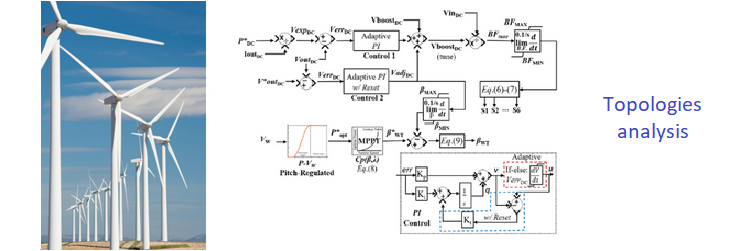Developing a comprehensive Dynamic Model for topologies of DC-AC and AC-AC ZSC converters and design of Impedance Network Controller

Keywords:
Small signal analysis, state space model, voltage-source converter, z-source converter, control architecture, electrical systems, electrical engineeringAbstract
Creating a complete dynamic model for the design of an impedance network and controller as well as the study of various dc-ac and ac-ac zsc converter topologies. Permanent magnet synchronous generator-powered wind turbines may be connected to the grid using a three-stage power conversion system that consists of an uncontrolled rectifier, a DC voltage source inverter, and a voltage boost converter. A topological modification is made to the two intermediate phases by a using a quasi-Z source inverter (qZSI). Additionally, a battery is integrated with the qZSI without any additional DC/DC converter. This paper provides an illustration of the use and management of ZSC for large-scale wind turbines with energy storage systems. The appropriate operation of the wind turbine and battery is ensured by the implementation of an energy management system. Depending on the operating circumstances and the battery state-of-charge, qZSI is regulated using a Z-Space Vector Modulation (ZSVM) approach to accomplish maximum power point tracking in the wind turbine, reactive power regulation, and battery charge/discharge. The simulations demonstrate how the system under examination should operate. This research provides towards the modelling and analysis of ac small signals for continuous-conduction mode z source converters (ZSCs). The ac small signal model assumes that the dynamics contributed by the z network are only present in the ZSC. Computer simulation results are utilised to validate the small signal modelling approach after deriving the AC small signal model of ZSC. The ac small signal models are applied in a variety of ways to ZSC design and experimental verifications. Subsequently, a list of expanded MC topologies, including three-level and hybrid MCs, is provided. Three-phase ac-ac buck-type chopper circuits are then explored as a specific instance of matrix converters (MCs). With this, a basis of better values for each of the converter topologies is generated. The performance analysis is examined in light of parasite resistance, and theoretic computation is used to optimise the system parameter design. Experiments are carried out to confirm the suggested converter's validity, and a lab prototype is built. This study delivers a thorough evaluation of significant topological advancements in MCIS networks and offers a detailed comparison of key elements.
URN:NBN:sciencein.jist.2023.v11.460
Downloads
Downloads
Published
Issue
Section
URN
License
Copyright (c) 2022 Pravin Ratanlal Choube, Vikas Kumar Aharwal

This work is licensed under a Creative Commons Attribution-NonCommercial-NoDerivatives 4.0 International License.
Rights and Permission



